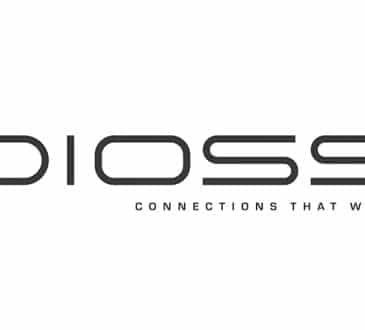Using Our Attention to Improve Collaborative Performance

I remember it very clearly—the instructor in my driver’s education class telling us that wherever we go with our eyes, the steering wheel will follow. When we turn our head to look at that billboard, our hands follow and soon the car is veering onto the shoulder. In other words, our body follows our attention. I still think about it when I’m driving and catch myself getting overly focused on things other than the road in front of me.
Several years later, on the Aikido mat, I heard the phrase “energy follows attention” and it occurred to me that this was what my driving instructor had been saying. Not only does our attention influence our movements, it influences our entire physiology as well as our thinking. What we pay attention to shapes our experience of the circumstances we encounter and of ourselves.
It’s easy to experience the importance of attention in Aikido when a training partner is trying to push you over. Focusing your attention on your head, or on your thoughts, you’ll be easy to topple. But if you move your attention down to the center of your body, or to your feet, you’ll be much harder to push over. Try this with a friend and you’ll see how powerful just a simple shift of attention can be.
There are many different ways of using our attention, and we can learn to cultivate and use our attention in ways that can improve our collaborative performance.
Using our Attention
Here are just some of the ways we can use our attention:
- We can zoom in on the fine details or zoom out to see the bigger picture.
- We can focus outside of ourselves on the people or circumstances around us, or direct our focus back inward, to ourselves as the object of our attention.
- With respect to ourselves, we can focus our attention on what we’re doing (activity focus) or how we are experiencing the activity (experiential focus). And we can get even more precise by shifting our attention (like changing the channel on your TV) between our thoughts (mental channel), our physical sensations (body channel), and our emotional state (feeling channel).
- We can also change the “level” of our attention. In other words, we can be fully immersed in the interaction, task or experience we’re in, or we can shift our attention to a place outside of that fully immersed experience to look back in on it. We can even pay attention to our attention itself, which can greatly expand our options and enhance our collaborative capacity.
Most of us use our attention in some of these ways every day although we might not be aware of it.
I Am Being Collaborative!
When my colleagues and I lead workshops with managers and teams, we see a common phenomenon across companies, cultures and countries: As the workshop participants begin to closely examine their own challenging conversations for the first time, they are, almost universally, surprised.
First, they’re surprised to realize that they’re not doing what they thought they were doing in those conversations (and were instead doing things they thought they weren’t doing). Holding up a mirror to their own conversations reveals the sometimes-uncomfortable truth that they aren’t always aware of what they are actually doing in their conversations. Or of how what they are doing impacts the people around them.
Now, we all do this at times—we think we’re sharing our views skillfully only to discover that everybody else in the meeting thought that we were being arrogant and close-minded. Or we’re respectfully questioning someone’s idea but later hear that the person felt personally attacked by us. We can’t be aware of everything, and when we’re feeling pressure or frustration it can be even more challenging to notice what we’re doing.
When workshop participants explain why some of their difficult collaborations go sideways, their explanations are typically other-focused: “That other person (or team) wasn’t ready,” or “they’re difficult personalities,” or “they just don’t get it.” These are the kinds of explanations that any of us might make when our collaborative difficulties don’t improve or get worse even though we’ve done “all the right things.” This doesn’t just happen in our collaborations, of course, but in many other areas in our lives.
This phenomenon partly reflects how the nervous system responds to challenges or adversity, activating the well-known “fight or flight” arousal response. In this mode, our attention narrows to focus on the perceived threat or challenge out there (along with a myriad of other physiological reactions that prepare our body to deal with the challenge). Although helpful for some situations, this reaction isn’t so helpful for many other challenges in our modern day lives, including our collaborative challenges.
With our attention narrowed and outwardly-focused on the people we’re trying to collaborate with, it’s hard to see the bigger picture, including our own part in the encounter. Focused on what we consider to be the problem out there, all our energy, thinking and creativity will be aimed at trying to solve that problem—which usually means trying to change or “fix” our colleagues. But this rarely works and often makes things worse. This outward focus also keeps us from paying attention to ourselves—to how we’re thinking, what we’re doing, what’s going on in our own bodies—or what we’re doing with our attention.
Although our attention is rarely recognized as a factor in executive performance, I’ve found that it is just as important as what we do with our words, or our bodies as we navigate the challenges of organizational leadership and interact with our colleagues and teams.
Written by Grayson James. Excerpted from Full Contact Performance: The Internal Art of Organizational Collaboration.
Have you read?
The Global Passport Index: The World’s Most Powerful Passports.
Countries With The Most Billionaires, 2023.
Top CEOs in Switzerland, 2023.
Biggest banks in the world, as measured by total assets, 2023.
The World’s Richest Self-Made Women, 2023.
Ready to join the CEOWORLD magazine Executive Council– Find out if you are eligible to apply.
Add CEOWORLD magazine to your Google News feed.
Follow CEOWORLD magazine headlines on: Google News, LinkedIn, Twitter, and Facebook.
Copyright 2024 The CEOWORLD magazine. All rights reserved. This material (and any extract from it) must not be copied, redistributed or placed on any website, without CEOWORLD magazine' prior written consent. For media queries, please contact: info@ceoworld.biz








